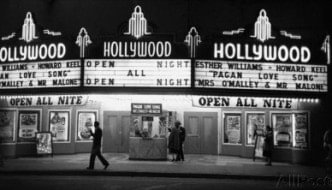
Photo by Hello I’m Nik on Unsplash
I doubt I am the only one who feels somewhat fatigued by the endless procession of superhero movies that have appeared in the last decade or so. Apart from the rare interesting release the genre has generally become very stale, with little innovation beyond narrative and stylistic norms. So when a new take on the genre does come along, like Spider-man: Into the Spider-Verse, it tends to garner a lot of excitement.
Spider-man: Into the Spider-Verse stands out by being an animation in a live-action-saturated market. The use of animation has allowed the filmmakers to closely recreate the visual structures of comic books, including panels and thought bubbles. From the moment that the classic Comics Code Authority seal of approval appears on screen before the opening credits, it is clear that the creators are familiar with the history and grammar of comic books.
The animation style is visually stimulating: the movements feel natural and the colours are entrancingly vivid – verging on psychedelic in parts – making for some captivating action scenes. The style is so unique that Sony, the company behind Into the Spider-Verse, are attempting to copyright the processes of animation utilised in making the film, which integrate both computer-generated and hand-drawn methods. However innovative these techniques may be, there are some glaring drawbacks to copyrighting specific forms of artistic creation, and it could set a worrying precedent. Imagine if after every great leap forward in animation the innovators decided to prevent others from using and building upon their techniques. Artistic progress in the field would have been inconceivably hindered, and audiences would have missed out on these developments.
In this corporate age it may be naive to consider art as a communal, societal process, but it seems that the many established techniques used by the creators of Into the Spider-Verse, passed down over generations, massively outweigh any new methodologies Sony may wish to copyright. Roy Lichtenstein, the artist who brought the comic book aesthetic into art galleries in the 1960s, said that “art doesn’t transform, it just plain forms”, as if evolving naturally like a living organism. This insightful hypothesis only resonates if artists allow their contemporaries to collaborate and contribute to the creative flow.
Regardless of how this contentious copyright case turns out, the achievements of Into the Spider-Verse cannot be disregarded. But the animation is not the only interesting aspect of the work; the film also employs a “multiverse” plot device which bolsters an otherwise rather thin storyline, and this fresh use of narrative is a welcome detour from the frequently muddled and tedious sci-fi plots that plague many superhero franchises.
Into the Spider-Verse is not a perfect film: there are lulls in the story and the soundtrack can be quite distracting at times, but it is certainly a marked improvement on the majority of uninspired superhero movies to hit the screens over the last few years. To compare it to Aquaman, another more formulaic superhero movie in cinemas at the moment, Into the Spider-Verse has not only received better reviews from critics, it is also more profitable, having recouped a larger proportion of its budget. Given that this financial bottom line is the only reason Hollywood makes so many of these films in the first place, perhaps it will show companies like Sony that audiences are looking for more risk-taking and experimentation from their pop culture.
Filed under: Film, TV & Tech
Tagged with: action, animation, cinema, comic, film, sci-fi, sony, spiderman, spiderverse, superheroes



Comments